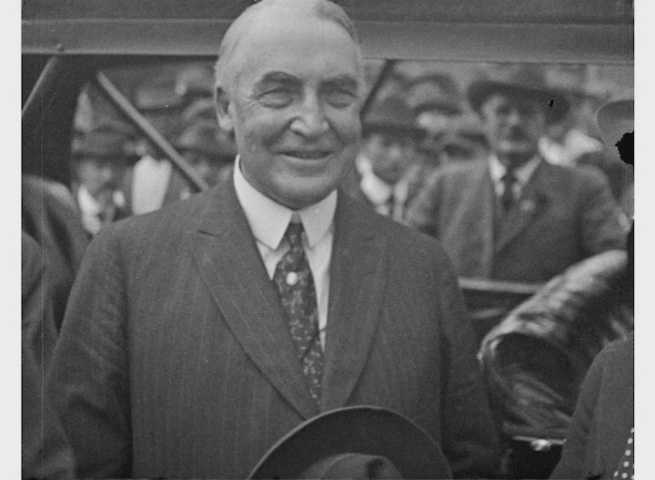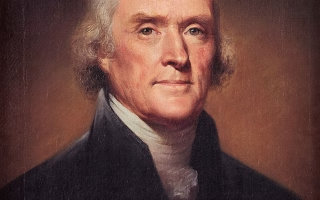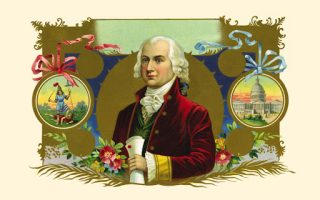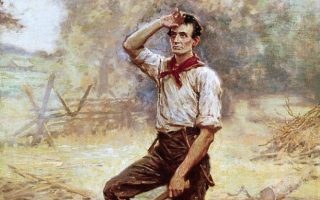kimzolciakwedding.com – The presidency of Warren G. Harding, the 29th president of the United States, is often remembered for its unfulfilled promises, the economic turbulence of the early 1920s, and the scandal that overshadowed his time in office. Harding’s term, lasting from 1921 until his sudden death in 1923, began with high hopes and public enthusiasm for a “return to normalcy” following the end of World War I. His rhetoric spoke of a peaceful, prosperous America that would retreat from the burdens of foreign entanglements and focus on national recovery. However, his presidency quickly became overshadowed by a series of corruption scandals that would ultimately mar his legacy.
While Harding was widely respected for his personal charm and political skills, he struggled to manage the ambitious, often morally questionable individuals he appointed to high office. The ensuing scandals damaged public trust in his administration and left a stain on his reputation that continues to affect historical assessments of his presidency.
This article will delve into the scandals and corruption that defined the Harding administration, the individuals involved, and the long-lasting effects these events had on public trust in government institutions. While the Harding administration was indeed marked by corruption, it is important to also consider the broader historical context and Harding’s personal role in the unraveling of his presidency.
The Rise of Warren G. Harding: A Promise of Normalcy
Warren G. Harding’s election in 1920 promised a return to “normalcy” after the upheavals of World War I and the progressive reforms of the Wilson administration. Harding’s vision resonated with a public tired of political instability, economic disruption, and the consequences of war. His campaign promised to restore traditional values, limit the role of government in the economy, and provide stability after the years of turmoil.
Harding’s charm and amiable personality helped him secure a decisive victory in the 1920 election, where he received overwhelming support from voters weary of the internationalism and social progressivism that had characterized President Woodrow Wilson’s administration. His message was simple but effective: return the nation to a more predictable, less politically turbulent future.
However, despite the public’s positive reception to Harding’s rhetoric, his presidency soon found itself ensnared in a web of corruption, scandal, and ethical lapses within his own administration. The seeds of these problems were sown not by Harding himself, but by the questionable individuals he appointed to positions of power and his failure to address the corruption that would soon undermine his administration.
The Ohio Gang: Harding’s Inner Circle of Scandal
One of the most critical factors in the corruption and scandals that plagued the Harding administration was the presence of the so-called “Ohio Gang,” a group of Harding’s friends and political allies from his home state of Ohio. Many of these men were appointed to key government positions based on their loyalty to Harding and their political connections rather than their competence or integrity. Unfortunately, this resulted in widespread corruption and unethical behavior within the administration.
The Ohio Gang included individuals who were involved in a number of shady deals, corrupt business practices, and outright criminal activities. These men were allowed to run roughshod over government policies and programs, enriching themselves at the expense of the public and engaging in activities that would later scandalize the nation.
Among the most notorious members of the Ohio Gang were:
1. Albert Fall and the Teapot Dome Scandal
One of the most infamous scandals of the Harding administration was the Teapot Dome scandal, involving Albert Fall, Harding’s Secretary of the Interior. Fall was responsible for overseeing the nation’s public lands, including valuable oil reserves at Teapot Dome, Wyoming. In a secretive and highly unethical arrangement, Fall leased these oil reserves to private companies in exchange for large bribes, amounting to more than $400,000 (equivalent to millions of dollars today).
The Teapot Dome scandal became a symbol of government corruption and the moral rot within Harding’s inner circle. While Harding was not directly involved in the scandal, it reflected the poor judgment he exercised in selecting and trusting individuals like Fall, whose actions would eventually lead to criminal charges and imprisonment.
2. Harry Daugherty: The Attorney General’s Misdeeds
Another key figure in the Harding administration was Harry Daugherty, who served as the Attorney General. Daugherty’s tenure was marked by accusations of corruption and misconduct, especially regarding his involvement in the sale of pardons and his handling of the justice system. He was accused of protecting illegal activities, covering up fraud, and using his position to enrich himself and his friends.
Daugherty’s questionable actions became a source of public scandal, contributing to the growing perception that the Harding administration was deeply tainted by corruption. His eventual resignation in 1924 came after further investigations into his activities, including his role in the illegal sale of government contracts. Though Daugherty was never convicted of criminal wrongdoing, the scandal surrounding his actions further eroded public trust in the federal government.
3. Charles Forbes: The Director of the Veterans’ Bureau
Charles R. Forbes was appointed as the director of the Veterans’ Bureau in 1921, an agency responsible for providing medical care and services to war veterans. However, Forbes used his position to orchestrate a wide-ranging scheme of corruption, embezzling funds intended for veterans’ services. He engaged in fraudulent contracts, overcharging for medical supplies, and misdirecting funds meant to provide healthcare for veterans.
Forbes’s activities were eventually uncovered, and in 1923, he was convicted of fraud and sentenced to two years in prison. His actions were a serious blow to the reputation of Harding’s administration, as they highlighted the level of corruption within government agencies. The scandal further intensified public distrust in the administration’s ability to manage federal programs effectively.
4. The Involvement of Other Ohio Gang Members
Many other individuals within Harding’s administration were implicated in various forms of corruption, ranging from bribery to mismanagement of federal funds. The presence of so many corrupt individuals in high office created an atmosphere of dysfunction and moral decay within the government. The Ohio Gang’s actions tarnished Harding’s reputation and became a source of public outrage.
Harding’s Response to Scandal: A Failure of Leadership
Throughout the Harding administration, the president’s response to the rising tide of corruption and scandal was, at best, inadequate. Harding was a man of personal charm and good intentions, but he often failed to exercise the leadership necessary to address the wrongdoing within his administration. He was reportedly unaware of the full extent of the corruption, particularly the Teapot Dome scandal, but he was still criticized for appointing men of questionable character and failing to act decisively when allegations of corruption surfaced.
Harding did make some attempts to address the scandals during his presidency. For example, he called for investigations into the activities of his cabinet members and some officials resigned under pressure. However, the damage had already been done. The perception of a corrupt and scandal-ridden government was difficult to shake, and Harding’s inability to effectively manage these crises contributed to the decline of his public standing.
Furthermore, Harding’s tragic death in 1923 from a heart attack left many of the scandals unresolved. His successor, Calvin Coolidge, inherited an administration tainted by corruption and scandal, and Coolidge’s first task was to restore public trust in the government. Although Coolidge was able to clean up some of the mess left by Harding’s administration, the scandals of the Harding years had already left a lasting mark on the public’s perception of the presidency and the federal government.
The Long-Term Impact on Public Trust and Political Reform
The Harding administration’s scandals contributed to a growing sense of cynicism toward the federal government, which persisted throughout the 1920s and beyond. The corruption of the Ohio Gang and the Teapot Dome scandal were particularly damaging to the public’s trust in elected officials, and they fueled calls for greater oversight, transparency, and accountability within the federal government.
In the years following the Harding administration, the scandals spurred the implementation of several important political reforms. The Teapot Dome scandal, for example, led to new laws regulating the leasing of federal lands and greater scrutiny of the relationships between government officials and private businesses. Similarly, investigations into the actions of individuals like Harry Daugherty and Charles Forbes led to calls for stronger anti-corruption measures and improvements in how government agencies functioned.
While Harding’s administration may have been marked by scandal and corruption, it also served as a catalyst for these important reforms. The public’s outrage at the blatant disregard for the public trust eventually led to changes in how American politics operated, including an increase in the power of congressional oversight and an expansion of efforts to clean up government corruption in the years to come.
Conclusion: Harding’s Legacy in the Context of Scandals
Warren G. Harding’s presidency is often remembered for its high hopes, its promise of normalcy, and its subsequent downfall due to corruption and scandal. Harding, a man with great personal charm, was ultimately undermined by his failure to control the corruption of his closest allies, the Ohio Gang. The Teapot Dome scandal, the actions of Harry Daugherty, and the criminal activities of figures like Charles Forbes left a permanent stain on Harding’s time in office.
Despite his personal integrity and desire to lead the nation into a new era of peace and prosperity, Harding’s inability to manage the men he appointed to key positions severely undermined his administration. His failure to address the corruption within his own ranks ultimately led to the erosion of public trust in the federal government, a trend that would take years to reverse.
The legacy of Warren G. Harding is thus a complex one. While his domestic policies and economic recovery efforts laid the groundwork for the prosperity of the 1920s, the scandals and corruption associated with his administration have overshadowed much of his presidency. Harding’s time in office serves as a cautionary tale about the dangers of appointing unqualified individuals to positions of power and the long-lasting effects of corruption on public trust in government.



